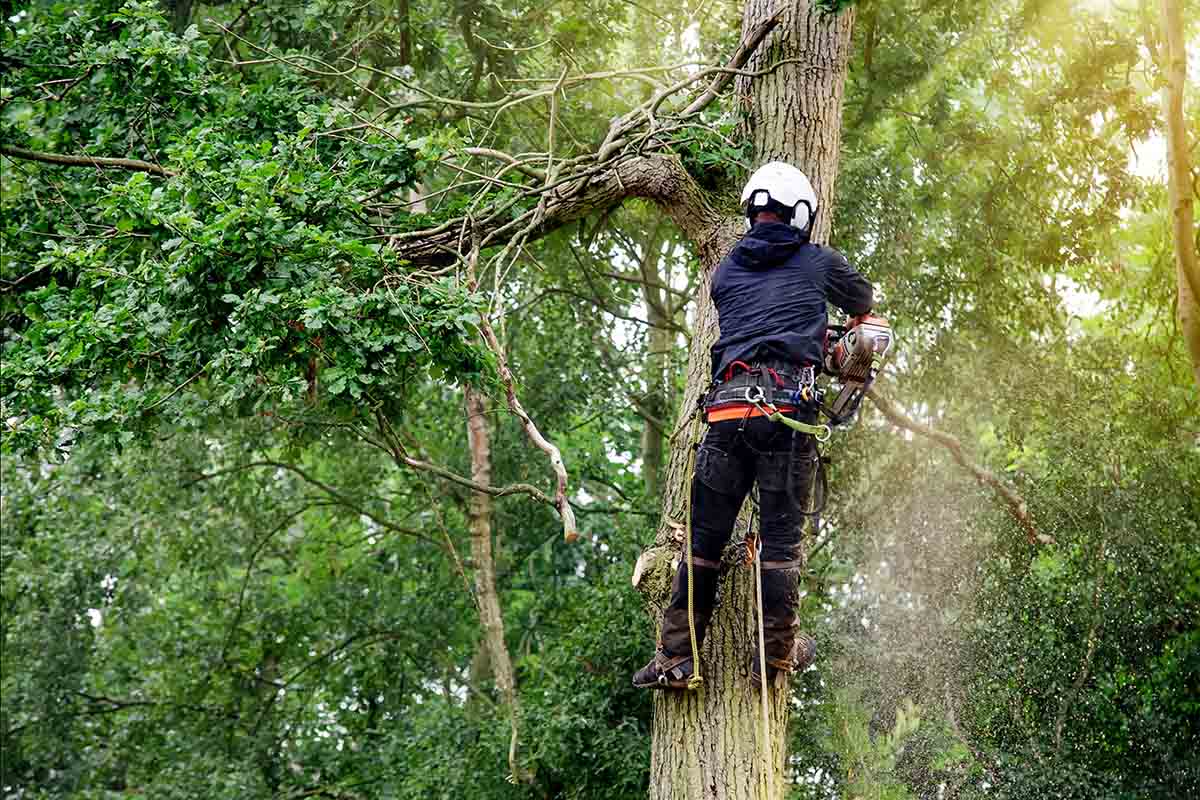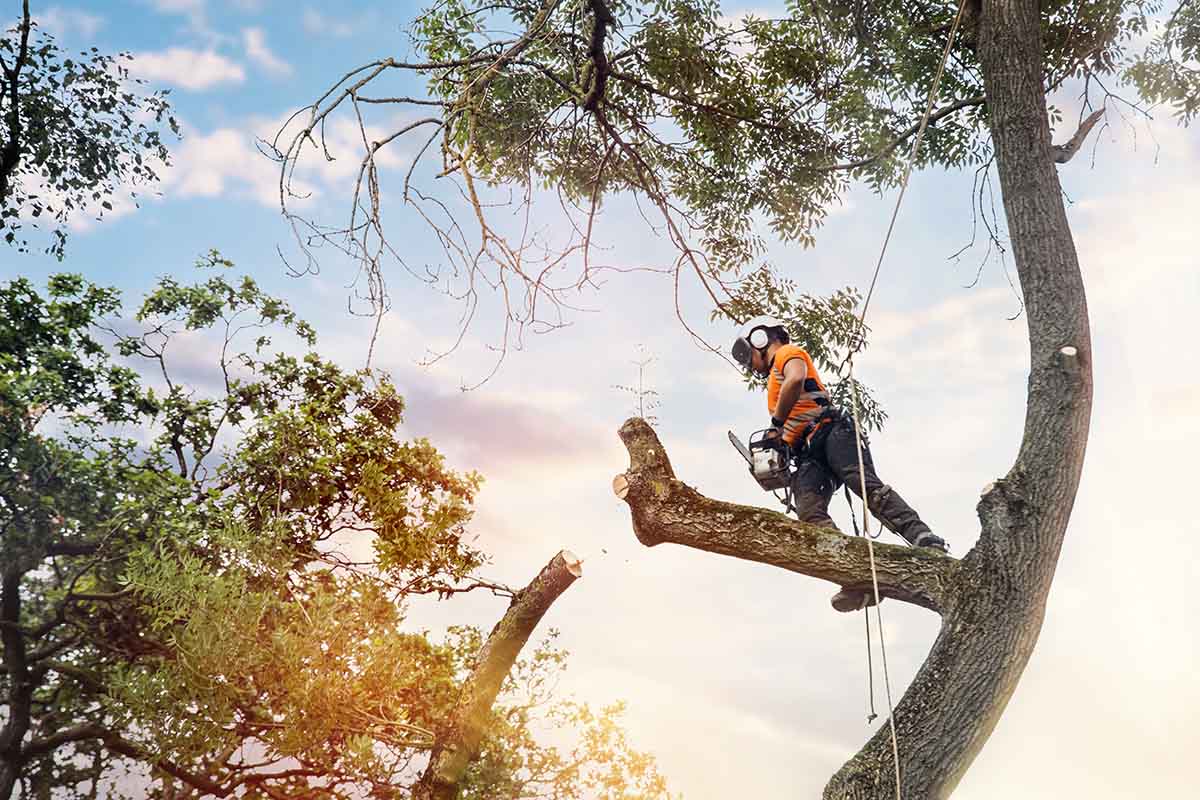Why Should You Consider Hiring An Arborist?
An arborist is a person who focuses on caring for trees. Although being a tree specialist may seem straightforward, specific requirements are necessary for becoming a certified arborist.
Who are arborists?
A person focusing on trees and training in tree and shrub care is known as an arborist. This covers tree trimming, upkeep, planting, and removal.
The intricate relationships between tree structures and their surroundings are well-understood by arborists.
An arborist is essentially an expert who knows what foliage likes and doesn’t like, but their main focus is ensuring that your trees have long, healthy lives.
You know what a doctor is, a person who looks after yourself and your family.
A specialist in trees is known as an arborist. Each dictionary provides a precise definition of an arborist:
- A professional who specializes in the cultivation and maintenance of shrubs and trees, including tree surgery, tree disease diagnosis, treatment, and prevention, as well as pest management.
Why Pick an Arborist to Take Care of Your Trees?
It would be best if you didn’t rush the choice to employ someone to take care of your trees. The work of an arborist may be precarious.
Only qualified experts with the skills to keep nearby structures and people safe should execute massive tree removals and pruning.
Inadequate tree care may not only harm your trees but may also cause them to die, lowering the value of the land you own in the process.
The term “arborist” describes a person who has acquired the technical know-how to appropriately and effectively take care of trees along with other woody plants.
Typically, arborists are relied upon to assess the health of trees, offer advice on how to care for them, and then perform necessary services, including pruning, fertilizing, and pest and disease management.
The International Association for Arboriculture has further information about becoming an arborist.
Above all, an arborist represents a highly skilled expert who understands their duty to preserve the benefits that trees may provide to property and life for your family and future generations.
Why Hire an Arborist?
Arborists can decide on the appropriate pruning method for each tree to preserve its health and enhance its look. Hire a professional if pruning necessitates using a ladder and chainsaw.
Tree cutting
In most cases, tree removal is the last choice, although arborists may assist in making this decision. With their help, arborists and their tools can effectively and securely remove trees.
A tree care specialist should remove trees since it is risky to do so.
If you need assistance, you can explore tree care services in your area to find qualified professionals who can safely handle the task.
Tree Emergency Care
Storms can seriously harm tree limbs or entire trees. To reduce the long-term harm that causes the trees and nearby property, these trees should be cut down or destroyed.
To complete this project securely, a tree services specialist should be recruited as it is risky labor.
Planting Trees
For a tree’s long-term health, it’s crucial to plant it in the proper location. Arborists can help with appropriate planting and suggest the best tree in the desired area.
Arboriculture: What Is It?
Tree care is the most straightforward description of arboriculture plantation service. This article will provide a more comprehensive response to “What is arboriculture?” and explain how it differs from timber and landscaping and what Certified Arborists perform.
Growing, caring for, researching, or removing specific trees and plants is called arboriculture. (Woody plants and vines are included.) Here are some of the several facets of arboriculture:
- selecting and caring for decorative bushes for a household;
- studying several hybrid trees;
- looking at the finest grafting techniques;
- recognizing a leaf as well as a plant for another person;
- assisting someone in determining whether their tree has a disease, along with how to mitigate it.
Arboriculture encompasses both theory and practice. You may work as an arboriculture professor and devote most of your spare time to research.
There is nothing improper about that. Forestry, landscaping, or arboriculture: what distinguishes arboriculture from forestry? That is a good query.
While arboriculture concentrates on individual trees, forestry concerns the health of a collection of trees (a forest!).
The adage “They can’t see the woods for the trees” is well known. Typically, it is an insult. Someone spent too much time on the small details and overlooked the overall picture.
Well, arborists purposefully do that.
Although there are occasions when they overlap, arboriculture and landscaping also have differences.
The aesthetic of a yard is the primary focus of landscaping. Landscapers alter trees and plants to achieve a desired appearance. It’s a little superficial.
Although ideally, they should work hand in hand, arboriculture puts more emphasis on the health of plants and trees than on aesthetics.
An excellent arboriculturist might advise you to establish native plants in your garden as opposed to, say, a palm tree.
Hiring An Arborist: Arboriculture International Society
The mothership is the International Society for Arboriculture (https://isarmc.org/) (ISA). It has existed for over a century.
The group exists to support trees, aid their upkeep, and enable others to enjoy them. The ISA provides a fantastic source of knowledge on trees. Additionally, it certifies arborists.
They boldly proclaim to be ISA-certified arborists on their website, but what does it entail?
Many Things:
- They possess an excellent level of expertise in tree maintenance.
- They have completed a comprehensive, in-depth ISA test covering ten distinct subjects, including soil, risk management, tree biology, pruning, and disease diagnosis and treatment.
- They receive continual, advanced instruction in arboriculture, as maintaining their certification calls for it.
- They’ve worked in arboriculture and possibly arboriculture education for at least three years, full-time.
- The ISA standard of ethics is followed by them.
A certified arborist is someone more knowledgeable than only how to use pruning shears.
They are more knowledgeable and experienced than someone who recently entered the industry since they are ISA-certified arborists.
They worry about the long-term health of trees rather than concentrating on temporary, aesthetically pleasing solutions, including tree topping, a practice you should avoid.
They won’t just cut a few limbs and be done with it. They carefully choose, position, and maintain their trees so that you can enjoy them for many years.





















